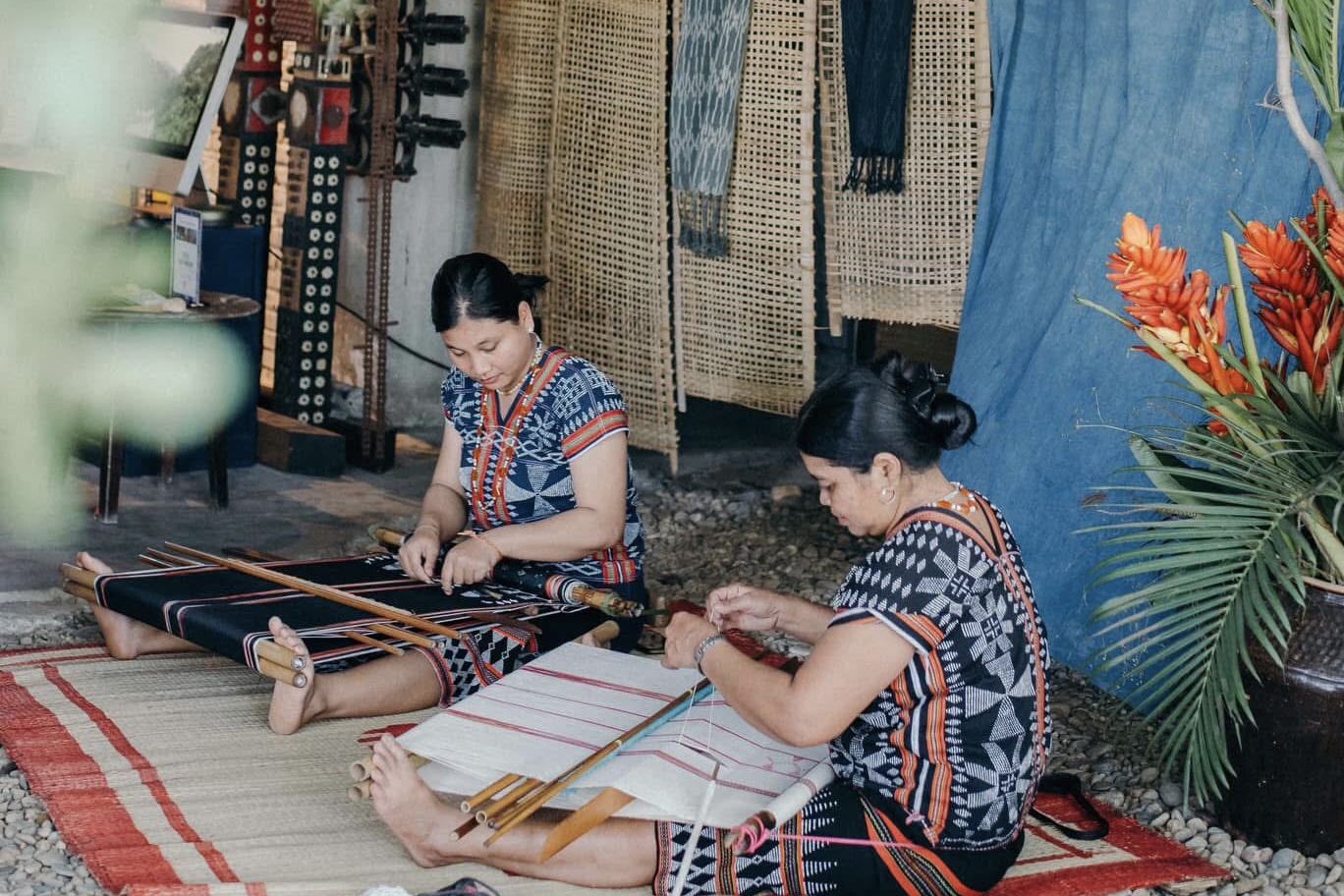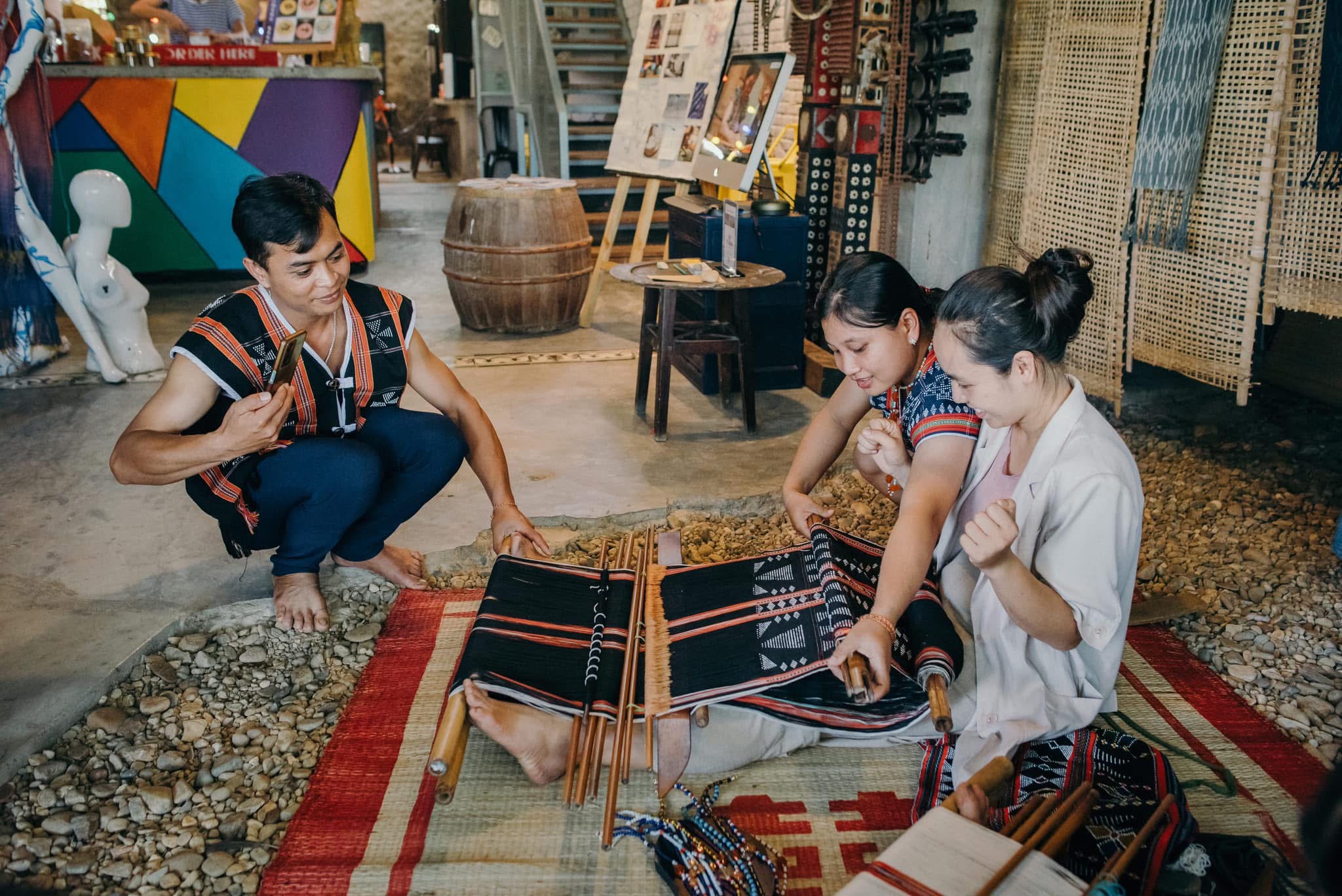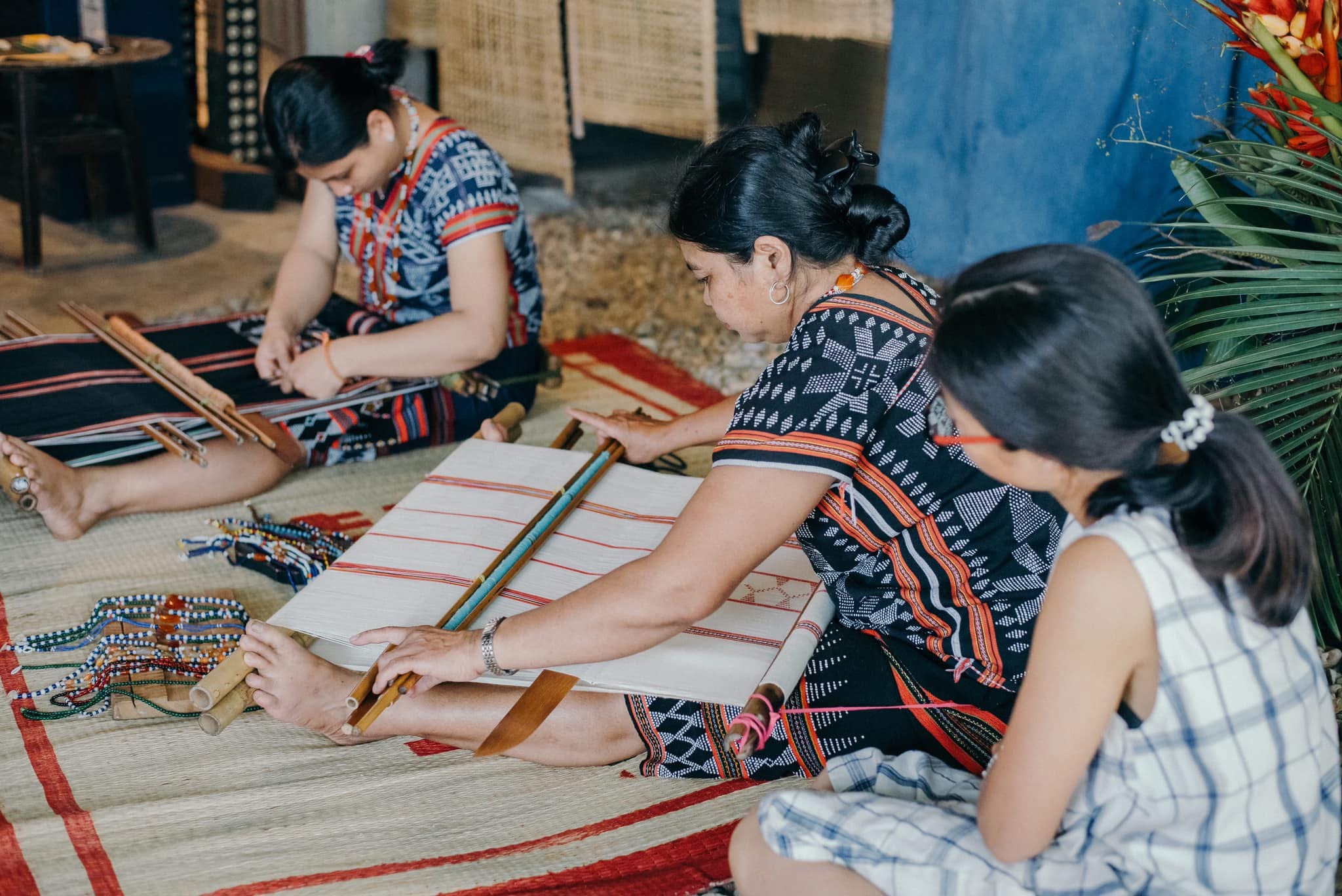TRADITIONAL WEAVING OF THE CO TU PEOPLE, QUANG NAM, 2024
The Co Tu community in Quang Nam accounts for 74.2% of the total Co Tu population in Vietnam and is concentrated along the Truong Son mountain in the three districts of Nam Giang, Dong Giang, Tay Giang. The Co Tu have many different traditional crafts such as brocade weaving, mat weaving, basket weaving and handmade pottery. In particular, the Co Tu brocade weaving was included in the list of National Intangible Cultural Heritage in 2014.
Their weaving tradition is renowned for its use of colored threads, bead embellishments, and the ikat technique, which creates distinctive wavy patterns. The Co Tu loom remains entirely manual, made from wooden and bamboo components that can be assembled and disassembled with ease. Co Tu weavers skillfully coordinate their movements with the loom: seated with their backs anchoring one end of the vertical warp threads, they push the other end with their legs, adjusting the tension to allow the horizontal weft threads to interlace while simultaneously inserting motifs. Each motif carries symbolic meaning, reflecting the daily life, natural environment, and cultural identity of the Co Tu people—for example, the ya ya dancer, animals, mountains, leaves, and other culturally significant elements.
While Dhroong Village operates a brocade weaving cooperative specializing in weaving with colored thread patterns and bead decorations, Cong Don Village is one of the rare places in Quang Nam where cotton is still grown, hand-spun, naturally dyed with indigo, and woven using ikat techniques to produce wavy motifs.
The showcase, held on September 28–29, 2024, is the result of fieldwork conducted since May 2024 in Dhroong Village, Ta Lu Commune, Dong Giang District, and Cong Don Village, Zuoih Commune, Nam Giang District, Quang Nam Province. It was carried out through the participation and co-creation of artisans from Dhroong Village, Ta Lu Commune, Dong Giang District, and Cong Don Village, Zuoih Commune, Nam Giang District, Quang Nam Province; fashion designer Pham Le Quynh of the brand hiAn; Pham Quang Thang of the brand Handmadee; cultural researcher Nguyen Huyen; and photographers/filmmakers Phuc Phuc and Manh Tien.
The showcase is part of the Heritage of Future Past project, supported by the British Council in Vietnam.







